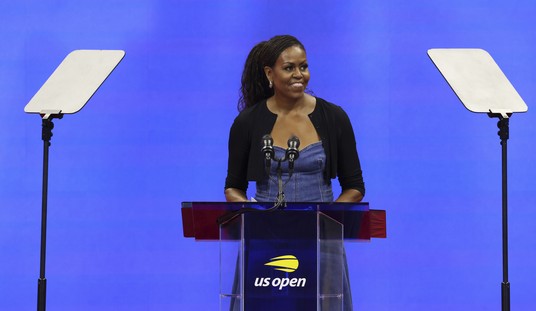President Donald Trump is reportedly considering de-escalating Washington’s trade war with China after slapping hefty tariffs on Chinese imports.
Shortly after Trump announced the tariffs, Beijing responded by issuing duties on American products and vowed that it would not back down as the president seeks a better trade deal.
Sources told The Wall Street Journal that the president might seek to ease up on tariffs to bring China to the negotiating table.
The Trump administration is considering slashing its steep tariffs on Chinese imports—in some cases by more than half—in a bid to de-escalate tensions with Beijing that have roiled global trade and investment, according to people familiar with the matter.
President Trump hasn’t made a final determination, the people said, adding that the discussions remain fluid and several options are on the table.
One senior White House official said the China tariffs were likely to come down to between roughly 50% and 65%. The administration is also considering a tiered approach similar to the one proposed by the House committee on China late last year: 35% levies for items the U.S. deems not a threat to national security, and at least 100% for items deemed as strategic to America’s interest, some of the people said. The bill proposed phasing in those levies over five years.
“President Trump has been clear: China needs to make a deal with the United States of America. When decisions on tariffs are made, they will come directly from the President. Anything else is just pure speculation,” White House spokesman Kush Desai said.
Trump said Tuesday he was willing to cut tariffs on Chinese goods, saying the 145% tariffs he imposed on China during his second term would come down. “But it won’t be zero,” he said. The development was welcome news to investors who had been spooked by the White House’s aggressive moves in recent weeks.
The Chinese government indicated it is willing to engage in trade discussions with the White House, but stressed that it would not bow to President Trump’s threats. Chinese officials view this development as an indication that Trump might fold.
Trump on Wednesday told reporters that the tariffs on Chinese products will “come down substantially, but it won’t be zero. It used to be zero.”
Recommended
We were just destroyed. China was taking us for a ride, and it's not going to happen. We're going to be very good to China. I have a great relationship with President Xi, but they would make billions and billions and billions of dollars a year, and they would build their military out of the United States and what they made, so that won't happen. But they're going to do very well, and I think they're going to be happy, and I think we're going to live together very happily and ideally work together. I think it's going to work out very well.
Trump: 145% is very high, and it won't be that high. It will come down substantially. It will not be zero. It used to be zero. pic.twitter.com/2MOhrkXrkH
— Acyn (@Acyn) April 22, 2025
China’s Foreign Ministry stated that Washington should “stop its threats and coercion, and engage with China on the basis of equality, mutual respect and reciprocity” if they want a better trade deal, according to CNN.
“Claiming it wants to reach an agreement with China while constantly applying maximum pressure is not the right way to engage with China — and it simply won’t work,” Guo Jiakun, a spokesperson for the ministry, said during a press conference.
CNN also noted that China views Trump’s new tone as a sign that he is backing down.
Trump’s shift in tone also went viral on the Chinese internet. On Wednesday, the hashtag “Trump chickened out” was trending as a top topic on social media platform Weibo, racking up more than 150 million views.
The world’s two largest economies have slapped record tariffs on each other in a swiftly escalating fight that has roiled global markets, disrupted supply chains and stoked recession fears.
So far, China has struck a defiant tone and refused to back down. Instead, it retaliated by raising tariffs on US goods to 125%, adding more American companies on its export control list and unreliable entity list, and restricting the export of critical minerals used in everything from iPhones to missile systems.
Beijing also moved to exert pain on key US industries, restricting the number of Hollywood movies shown in the country and returning at least two Boeing jets intended for use by Chinese airlines to the US.
Of course, this could have been Trump’s plan all along. He is known for opening up with a more radical version of what he is demanding, then negotiating down to something that more closely resembles his ultimate objective.
The president will have to navigate possible trade negotiations with China in a way that allows its government to save face while also ensuring better conditions for the US. It is not certain how long this back-and-forth will persist until both governments reach a deal.


